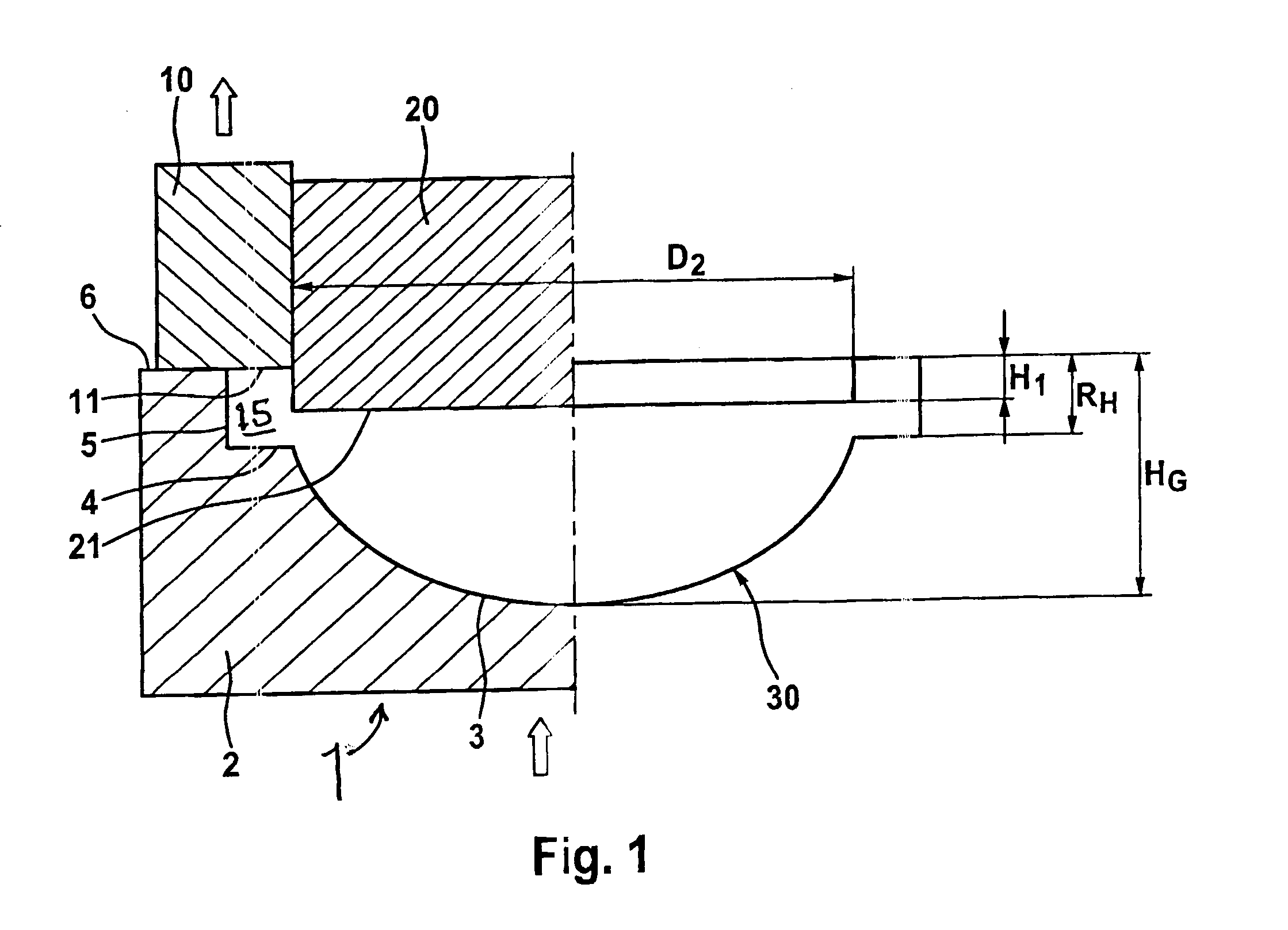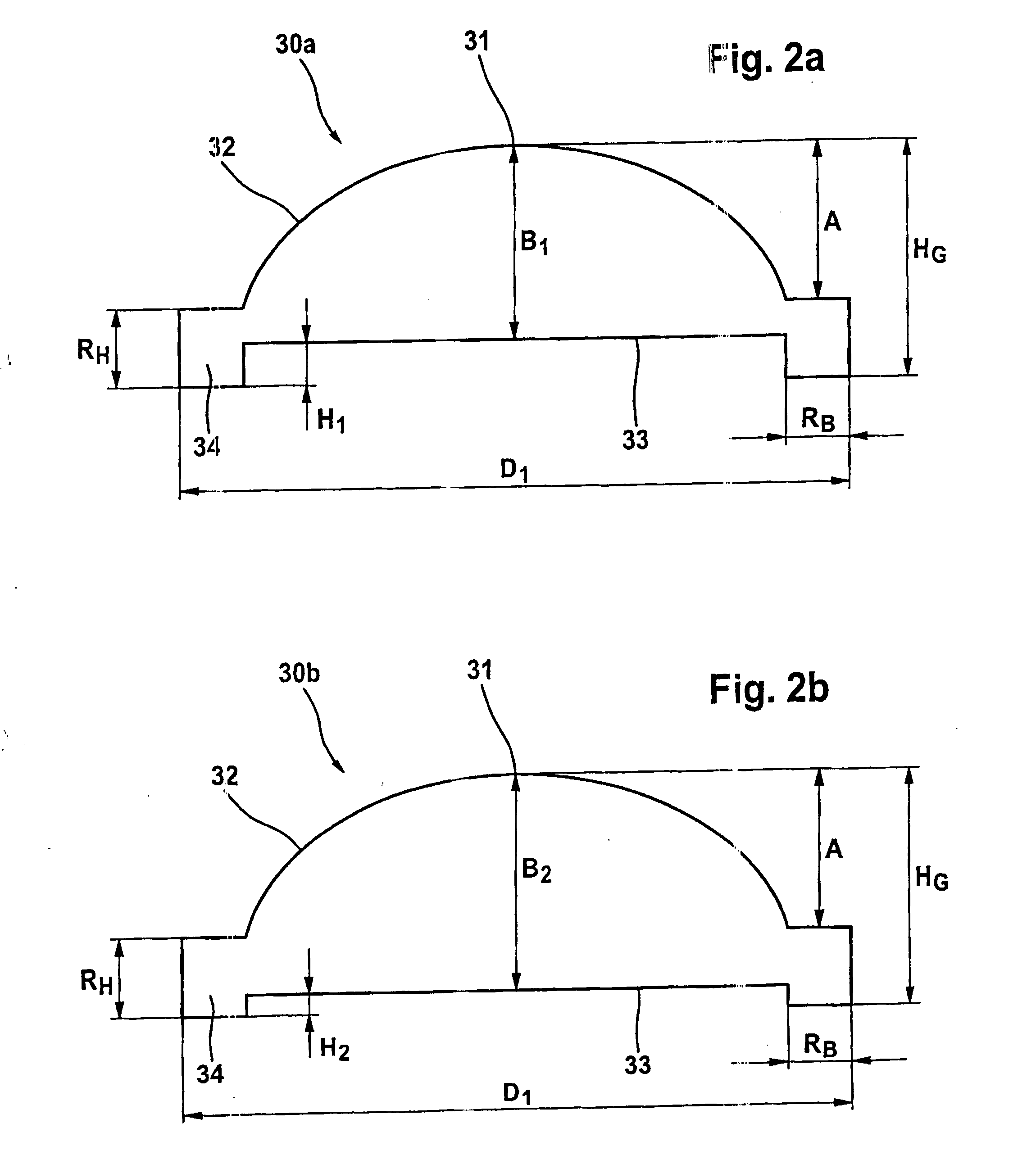Method for making a lens and an apparatus for precise pressing both sides of the lens
a technology of lens and pressing device, which is applied in the field of making lenses, can solve the problems of not being suitable for mass production with high productivity, and achieve the effect of constant installation dimensions
- Summary
- Abstract
- Description
- Claims
- Application Information
AI Technical Summary
Benefits of technology
Problems solved by technology
Method used
Image
Examples
Embodiment Construction
[0050] A precise pressing apparatus 1 is shown in cross-section on the left side of FIG. 1. This precise pressing apparatus comprises a lower mold part 2, an upper mold part 10, and a press die 20 of a diameter D2. A piano-convex lens 30 is made with this precise pressing apparatus 1, which can be used for a motor vehicle projection headlight.
[0051] The lower mold part 2 has an aspheric concave basin 3, a circumferential horizontal shoulder 4 extending around the concave basin and a vertical peripheral rim 5 extending up from the horizontal shoulder 4. The upper mold part 10 comprises a mold ring that bears on the facing surface 6 of the lower mold part 2 and that extends inward over and near the horizontal shoulder 4. The distance between the horizontal shoulder 4 and the underside of the mold ring defines the height RH of the supporting rim 34 of the lens 30.
[0052] In order to guarantee the optical properties of the lens 30 and to avoid tilting of the optic axis from the top sid...
PUM
| Property | Measurement | Unit |
|---|---|---|
| diameter | aaaaa | aaaaa |
| weight | aaaaa | aaaaa |
| diameter | aaaaa | aaaaa |
Abstract
Description
Claims
Application Information
 Login to View More
Login to View More - R&D
- Intellectual Property
- Life Sciences
- Materials
- Tech Scout
- Unparalleled Data Quality
- Higher Quality Content
- 60% Fewer Hallucinations
Browse by: Latest US Patents, China's latest patents, Technical Efficacy Thesaurus, Application Domain, Technology Topic, Popular Technical Reports.
© 2025 PatSnap. All rights reserved.Legal|Privacy policy|Modern Slavery Act Transparency Statement|Sitemap|About US| Contact US: help@patsnap.com



